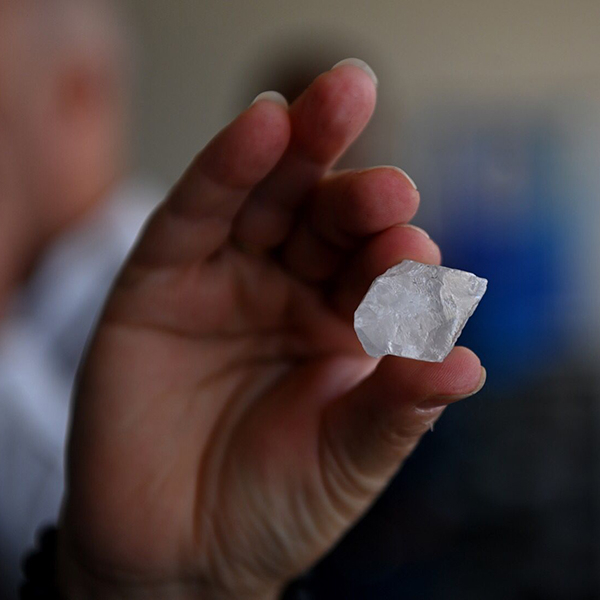
In 2004, when I was a fledgling editor of the Geneva-based trade publication Couture International Jeweler, I spent a week in southern Africa on a press trip organized by De Beers. It was my first time in Africa, and I came home with a profound appreciation for all that I’d experienced and learned.
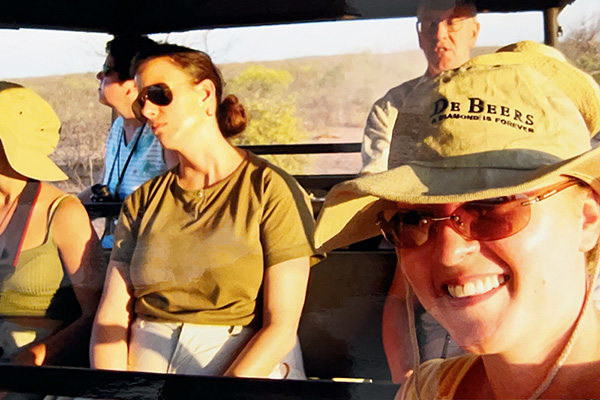
My chief takeaways were, of course, centered on diamonds. I saw how they were mined, and how both Botswana and South Africa had managed, and benefited from, their diamond resources.
Last week, I had the opportunity to repeat the very best parts of that trip on a five-day return visit to Botswana as a guest of the Seattle-based retailer Ben Bridge. I was one of a handful of editors the company invited on the trip, which also included a group of diamond industry stakeholders hosted by De Beers—the New York City-based retailer-influencer Stephanie Gottlieb among them. All together, there were 15 of us, including two photographers hired by De Beers, whose images you’ll see below.
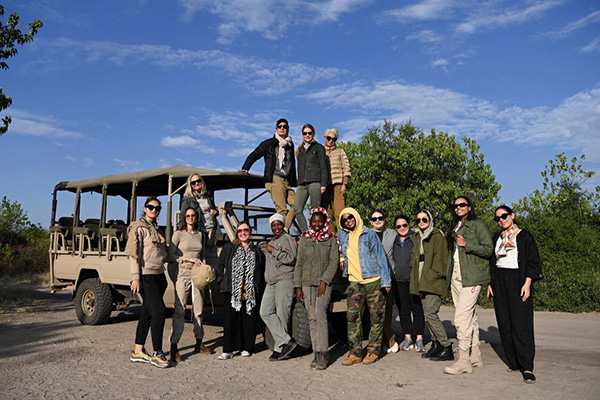
The trip kicked off in the capital of Gaborone (“Gabs” to the locals). On day 1, we toured the headquarters of De Beers Global Sightholder Sales (DBGSS), which relocated here from London in 2013. That afternoon, some of us split from the larger group to visit the Leo Schachter factory in nearby Molepolole, to see where Ben Bridge’s Signature diamonds are cut. (En route we made two pit stops: first, at Babies-R-Us, to swoop through the aisles in search of coloring books and puzzles for the two dozen kids at our second stop, Bana ba Keletso, a day care center long supported by Leo Schachter.)
On day 2, we journeyed to the Jwaneng Mine, the richest diamond mine in the world, located about 160 miles southwest of the capital. And on day 3, we flew to Kasane, a small city in the northwest of the country that is the gateway to Chobe National Park, one of the finest wildlife viewing destinations in the world (and home to some 45,000 elephants!).
Of all the press trips I’ve taken since I started writing about the gem and jewelry industry in 2000, none has been organized by a retailer. I wanted to understand why it was important for Ben Bridge to bring a cohort of American editors all this way.
Stacy Speicher, the company’s vice president of marketing—and one of two accomplished and amiable Ben Bridge executives who joined the trip (Angela Hope, vice president of merchandising, was the other)—shed light on the company’s ambitions:
“We really believe there’s a strong diamond story to be told, not only about how diamonds are ethically sourced but also about the lasting positive impact they have in the countries they’re sourced from,” Speicher told me. “This is such a great opportunity for journalists to see for themselves the good diamonds are doing.”
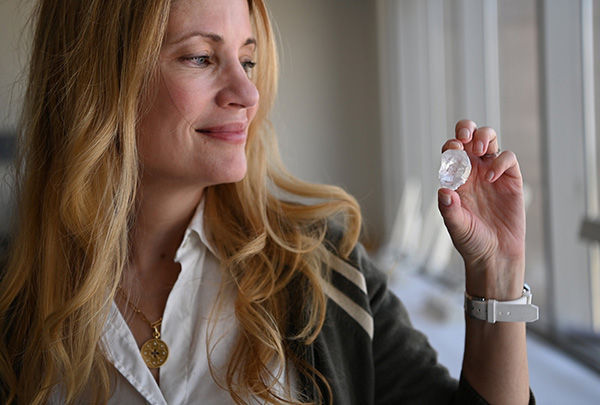
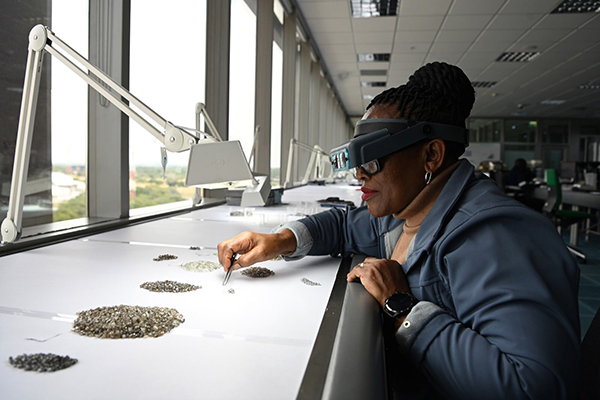
Having been to Gaborone and Jwaneng previously, I had a decent grasp of Botswana’s history with De Beers, and the importance of diamonds to the nation’s economy and social fabric. Debswana, a 50-50 joint venture between the De Beers Group and the government of Botswana, was established in 1969. It operates four mines—Jwaneng, Orapa, Letlhakane, and Damtshaa—and is the biggest contributor to De Beers’ rough diamond production.
(Note: JCK’s news director, Rob Bates, has covered the tenser-than-usual contract negotiations currently underway between De Beers and the Botswana government. The topic did not come up during our press visit. When I asked about it informally, I was told the issue would be settled by the end of June.)
But much has changed since 2004. In addition to the fact that De Beers’ sightholders now travel to Gaborone 10 times a year to view and buy their assortments (each sight is valued between $400 million and $500 million), many are now keenly focused on obtaining proof of their diamonds’ origins.
A diamond’s source mattered back then, too, of course. The Kimberley Process certification scheme was just a year old at the time of my first Botswana visit. And though the premiere of the Leonardo DiCaprio thriller Blood Diamond was still two years away, the trade was already deeply embroiled in the conflict diamonds crisis.
Today, the need to understand origin is more nuanced and arguably more acute than ever, given the rise of lab-grown diamonds and the war in Ukraine, which has stoked demand among diamond sellers in America for documentation proving their diamonds did not originate in Russia.
“While sourcing has been important to us for a long time, it hasn’t necessarily been at the forefront for the consumer, and that’s starting to shift,” Hope told me. “People are hungry to know and understand where their diamonds are from.”
Below are three things about De Beers’ operations in Botswana that made a lasting impression on me.
Diamonds hold multiple meanings for the people of Botswana.
On our first night in Gaborone, the De Beers team organized a spectacular bush brai (aka a good old-fashioned barbecue) at the Mokolodi Nature Reserve, where a number of DBGSS employees and local journalists—including the Botswana-born transgender activist Kat Kai Kol-Kes—joined us.
Over a dinner of grilled meat served at a long candlelit table, I spoke to two women, both on the communications team, who joined De Beers eight years ago. While I didn’t catch their names, I couldn’t mistake their appreciation for diamonds.
“Diamonds mean education, they mean health care, they mean empowerment,” one of the women told me.
In a similar chat with Bakang Phuthego, who works in De Beers’ social impact and sustainability portfolio, he recalled the moment he first heard that the company wanted to hire him. “I thought it was a joke—I didn’t believe it could be true,” he said. “When my father found out, he was so proud.”
That pride was palpable. And I was far from the only one who thought so. “Hearing the impact from the people of Botswana themselves was so meaningful,” Speicher said. “It’s not a corporate line. You’ve seen and heard this yourselves. And we’ll take this back to our managers and let them share as well.”
Yes, the Jwaneng Mine is a giant open-pit operation. Here’s why that’s the wrong thing to focus on.
In the Setswana language, Jwaneng means “a place of small stones.” The mine lies on the edge of the Kalahari Desert, adjacent to the Jwana Game Park, where we spotted zebras, giraffes, and countless impala on a brief safari in the chilly morning hours before our mine visit.
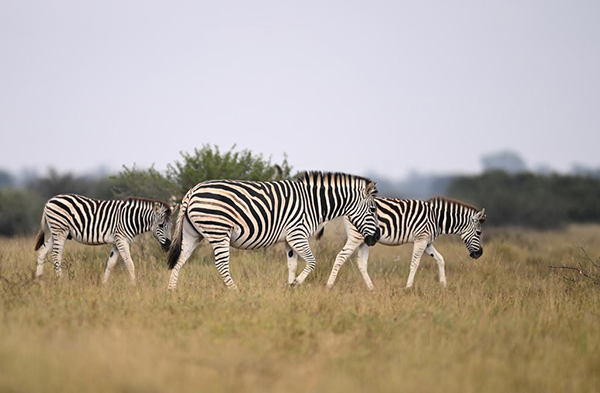
The Jwaneng kimberlite pipe was discovered beneath the desert sands in 1971, just five years after Botswana declared its independence. At the time, there were only about 60 people living in the Jwana region, according to De Beers. Production began in 1982, spawning the growth of the local township, which now numbers some 18,000 people.
Known as “the prince of mines” because it is the richest diamond mine in the world by value, Jwaneng was a jaw-dropping sight. The open pit measures about 1.5 miles by 1.1 miles across and is now about 1,480 feet deep. Approximately 110 million tons of material is removed every year; about 30% is diamond-bearing.
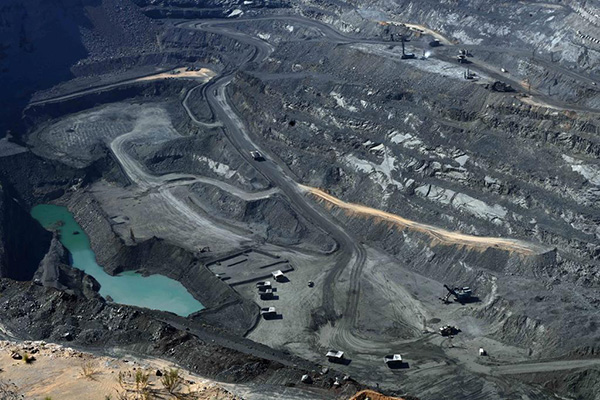
As we stood at a viewpoint along the rim, we watched a steady stream of gargantuan Komatsu trucks ferry hundreds of tons of material from the bottom of the pit up snaking roads etched into the slopes of the mine. From a distance, they looked like mechanical ants attempting to terraform Mars. The scene was awe-inspiring and otherworldly.
When I visited Jwaneng in 2004, we were able to journey to the bottom of the pit and stand atop the most central of the mine’s three kimberlite pipes. With a yield of about 300 carats per 100 tons (meaning that De Beers is able to recover around 300 carats of gem-quality material for every 100 tons they mine), the central pipe is enormously valuable.
This time, we could only admire the pit, which is clearly much deeper now, from afar. By 2034, when the mine is expected to go underground, it’ll be extended to a depth of 2,677 feet, or about half a mile.
I posted some images from the mine to my Instagram and received a few disapproving comments from people, including some lab-grown advocates, who focused on the amount of earth that had been displaced over the past four decades—something on the order of 3.2 billion tons.
I understood where the critics were coming from, but I knew they lacked a larger context. They didn’t see the hospital that provides health care to the mine’s 12,000 employees and the surrounding community (each person in Botswana, we learned, has an average of seven dependents). Nor were they likely to know how, in a country where the unemployment rate hovers around 23%, those jobs are critical to so many livelihoods. After meeting many people who depend on the income generated by diamonds, it was easier to look past the size of that gaping pit and focus on the community that had grown up around it.
Women occupy leadership positions throughout De Beers’ operations in Africa.
During our Jwaneng tour, we met a woman who drives one of the Komatsu trucks that carries gravel from the bottom of the mine up to the rim. Though the word truck is something of a misnomer.
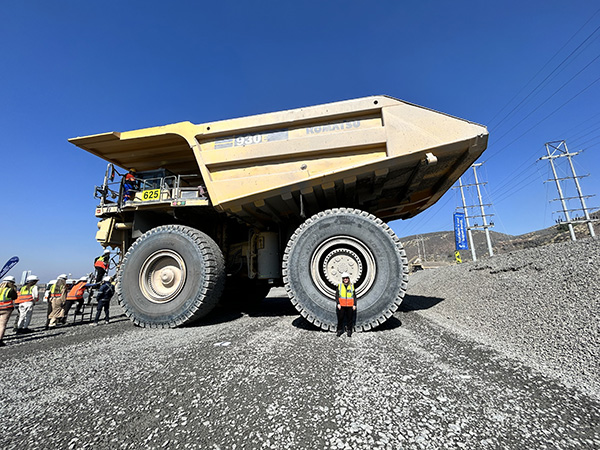
The Komatsu is bigger than most homes. Each of its four tires costs around $60,000. And though it’s not, technically, the biggest truck in the world, it has a capacity of 300-plus tons and looks more like a mobile apartment building than a vehicle. (There were plenty of jokes about how the elevated platform where the driver’s cab is located is bigger than many New York City apartments.)
In her yellow hard hat and blue and orange safety gear, the cheerful driver who gamely answered our questions was just one of the many women we met who hold positions of power and great responsibility across De Beers’ Botswana operations.
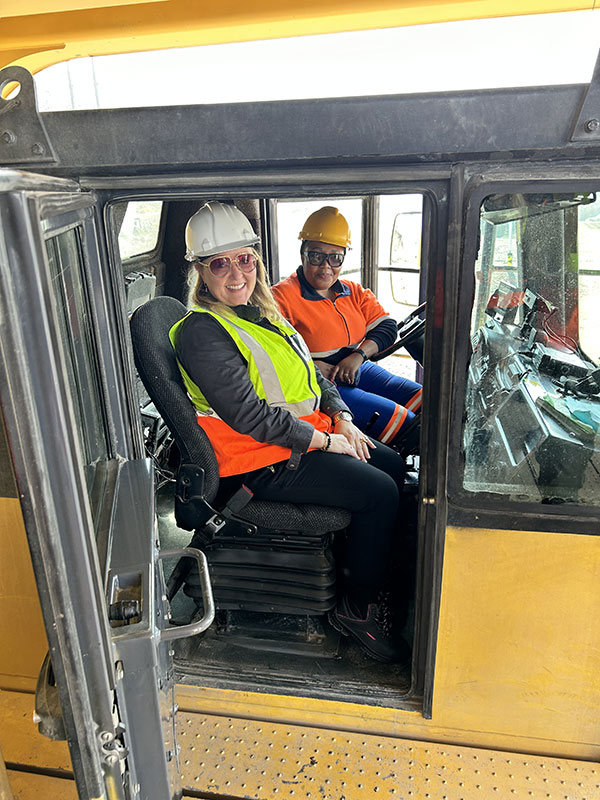
From the Gaborone-based team behind the “Building Forever” campaign to the security chief at the mine, the women impressed us with their competence, their openness, and what seemed like their genuine passion for diamonds.
“The takeaway, I think, for all of us is the incredible role women have played and are playing here,” Hope told me. “We’ve been searching in the U.S. for a more diverse way forward, and perhaps we should have been looking here a long time ago.
“For me, a really impactful moment was when we were having lunch at the mine and I was sitting with the head of security,” Hope added. “She has a CPA background. She was telling me about her education that was covered. For her, diamonds symbolize love, support, and strength. To hear the pride in what she’s doing—it was very meaningful.”
Top: A 79-carat rough diamond I held at the De Beers Global Sightholder Sales facility in Gaborone (all photos courtesy of the De Beers Group, except 2004 and Komatsu photos)
Follow JCK on Instagram: @jckmagazineFollow JCK on Twitter: @jckmagazine
Follow JCK on Facebook: @jckmagazine






